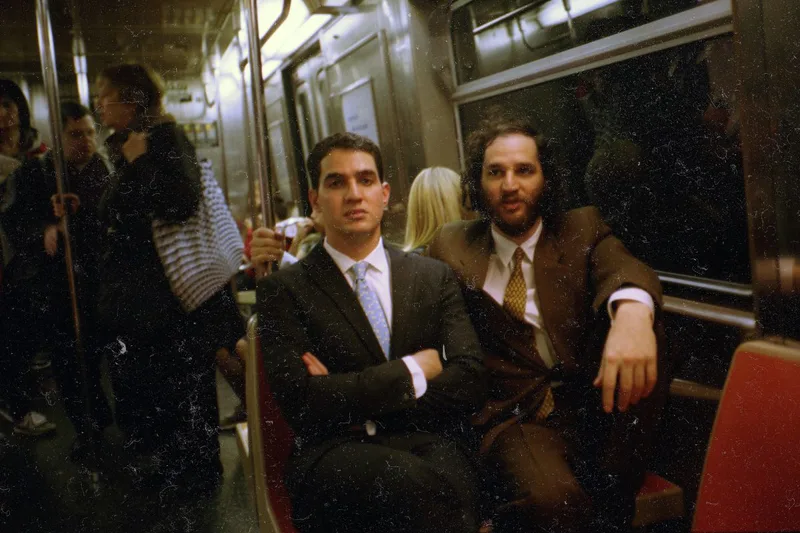Written by Naomi Fry
What can we learn from the chameleon-like style of Good Time's protagonist?
In Josh and Benny Safdie’s Good Time, Connie Nikas (Robert Pattinson) is a small-potatoes hustler, handsome but shifty-eyed, a sweet talker fumbling through a mess of poorly-executed schemes. His style over the course of the movie is a mix of aggressively generic cultural artifacts that somehow achieve more than the sum of their parts, reflecting the opaque jumble of impulses from which his actions spring willy-nilly.
If Connie’s fits in Good Time could speak, what would they say? Here’s a breakdown.
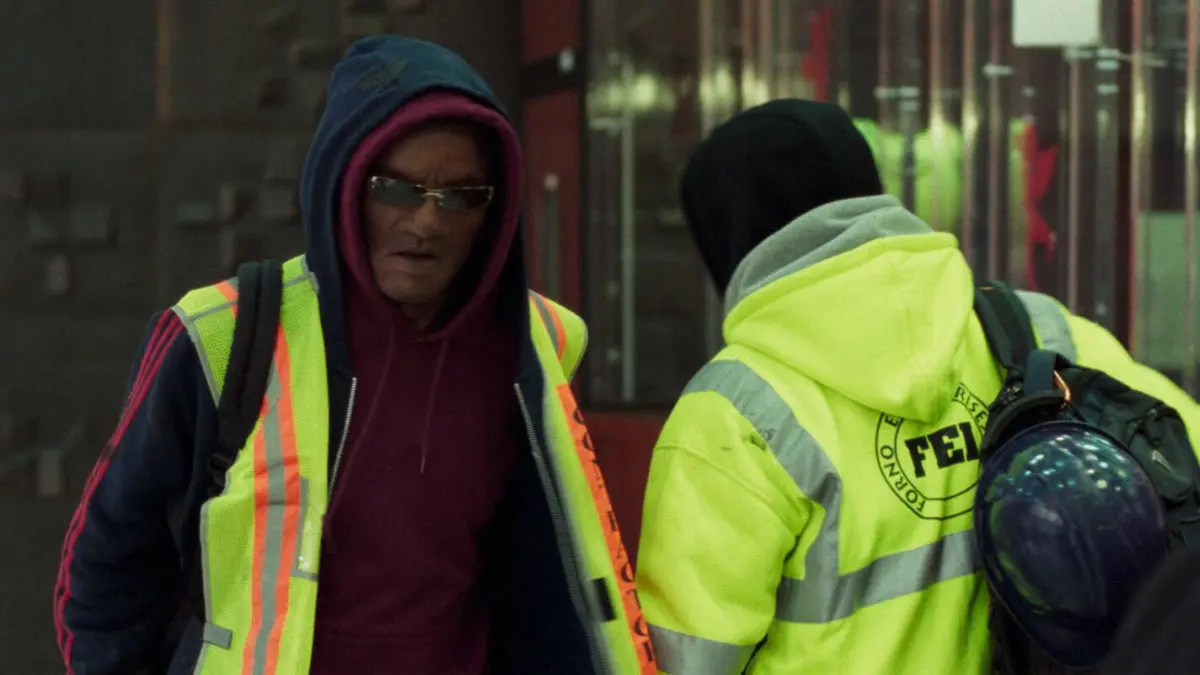
Robbery Vest and Mask
Connie’s narrative begins when he robs a bank with Nick, his mentally disabled brother. The two wear rubber masks bearing the faces of black men, accessorized with identical pairs of gold-plated sunglasses. (The failure of the heist, it seems to me, points to the feeble impulse behind this swaggering appropriation.) Connie doubles up on his hoodies—putting on a black-and-red Adidas number on top of a maroon one—and both he and Nick wear what look like reflective construction vests. The look is very Aphex Twin's Windowlicker—a grotesque visual hodgepodge that can’t be narrowed down to one definitive meaning, running parallel to Connie’s misguided intentions and ambiguous actions, which are simultaneously tender and greedy, loyal and cutthroat.
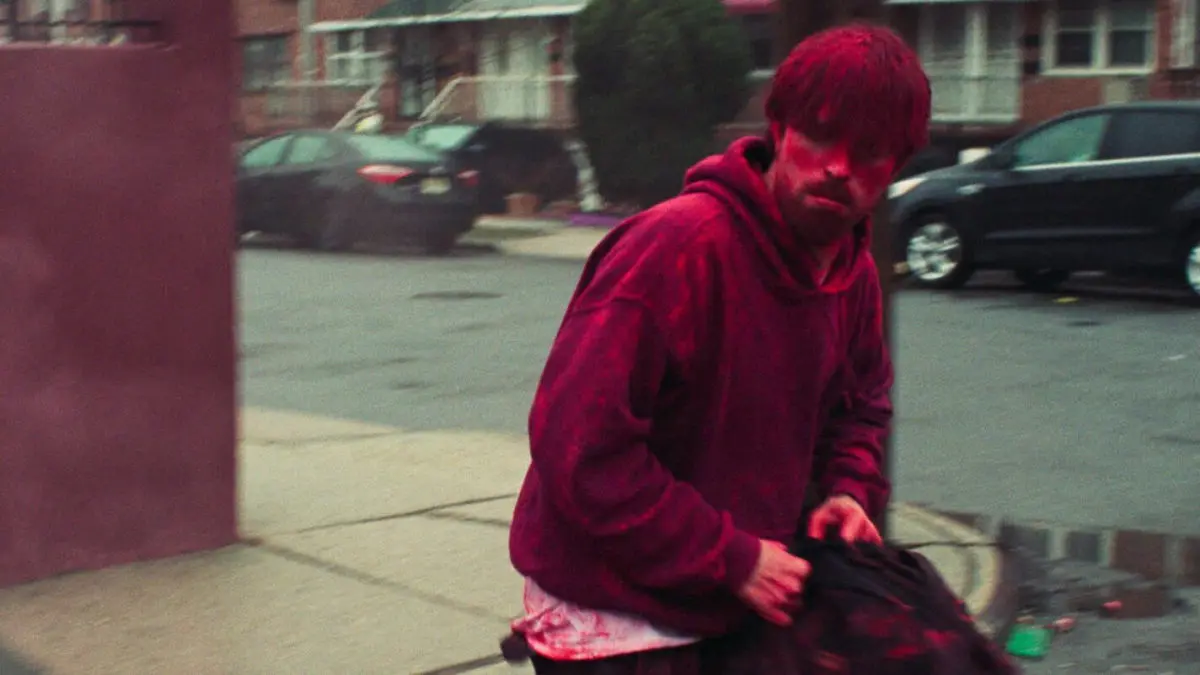
Dyed Hoodie
When a dye pack concealed in the cash explodes inside the getaway car, the brothers are splattered head-to-toe. The maroon of Connie’s sweatshirt (by now he’s removed the Adidas hoodie and his worker vest) is now echoed in the dye’s red. The look is weirdly cool—somewhat reminiscent of the Sterling Ruby/Raf Simons spray-fabrics collaboration from a couple of years ago—but the dye serves a double purpose. It adds another layer of masking, but one that only serves to make Connie more conspicuous—a curse of Cain figured sartorially. His fate will not be evaded.
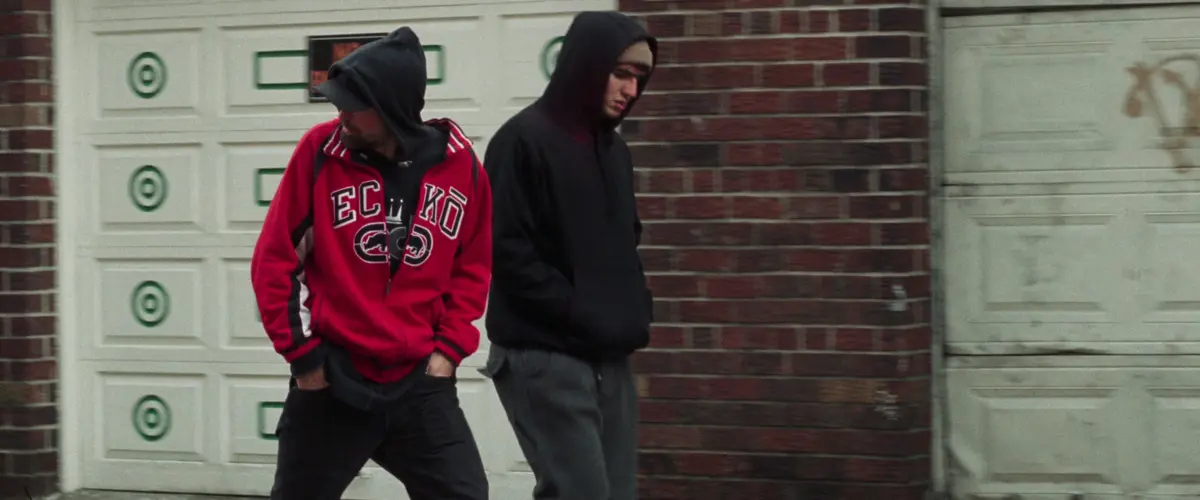
Ecko Zip-up
After scrubbing off in the generically depressing Dominos Pizza bathroom (the red door of which is yet another nightmare echo of the dye’s branding effects), Connie changes into a black hoodie and an Ecko zip-up over it—a hip-hop-cum-suburbia look. This is streetwear that calls attention to itself as streetwear, and it goes along with the other rap-inflected, verging-on-cheesy white-boy banalities of Connie’s look: the small diamond studs in both his ears, or his silver chain, all amounting to weak bluster.

Red Coat Over Gray Hoodie
This look is a bit of an extended remix of the Ecko fit, but the proportions are wider, Vetements-esque. What’s more, it’s curiously reminiscent of the silhouette worn by Corey, Connie’s older lover. Corey is a former party girl, used to good times and late nights, but her glory days are over. A middle-aged teenager with a nightstand crowded with pill bottles, she lives with her fed up mother in a barely-tenable bourgeois pressure cooker—a state of simmering friction that explodes into bouts of hysteria. Her enormous fur coat recalls feminine glamour and decadence, but also feels like swaddling on an overgrown infant. Connie’s layers similarly evoke the proportions and bravura of a much larger man while also laying bare the vulnerability of his slight frame. A similar tension was at play, I think, in the case of the shearling-wearing IKEA monkey.

Security Guard Uniform
This outfit comes on the heels of what is possibly the most violent episode in the movie, where Connie beats and drugs a security guard in an amusement park, then steals his uniform to interact with the police. A case of mistaken identity has already animated a central part of the plot when Connie mistakes a bandage-faced Ray for Nick at the hospital, but this second instance of role-switching makes clear how tenuous and situational power is—more a costume than a set of convictions. The security guard is already once removed from authority; an underpaid, likely hourly, contractor who is stripped of his role the moment its external signs are taken away. But when Connie puts on the uniform, the joke becomes even more bitter.
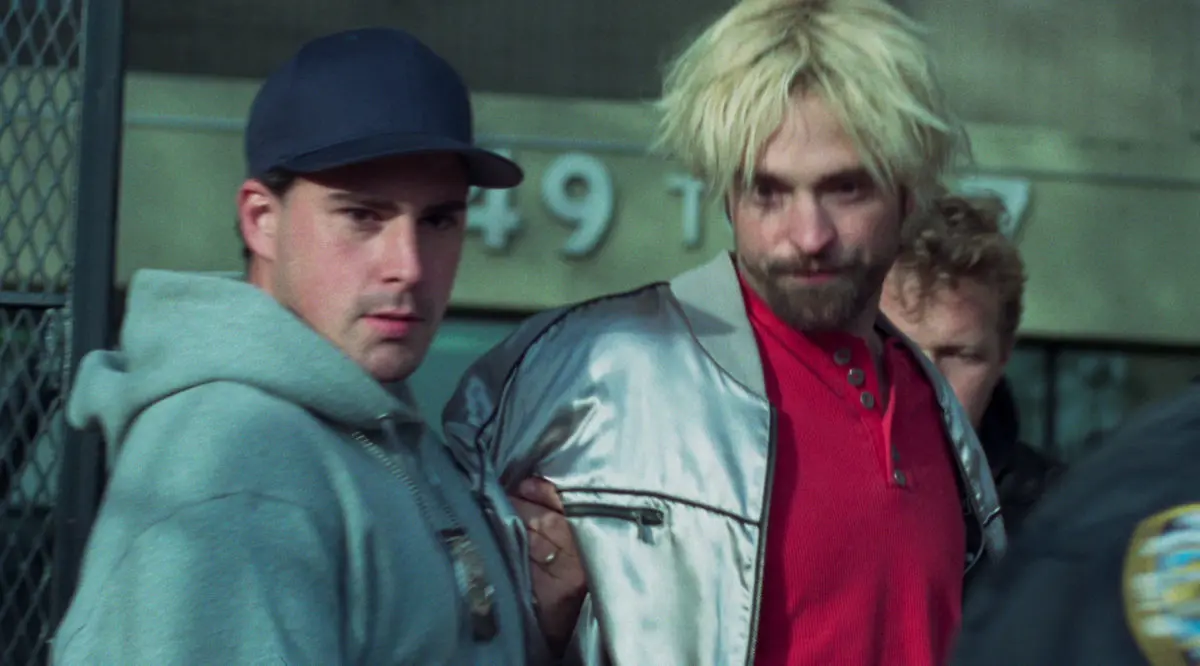
Silver Jacket
With Connie's reflective jacket and platinum hair, this is a very Diesel jeans look, very ’98, very House music, and it sharpens the appeal of the movie as a game of opposites. Good Time is quite possibly about the worst time a person can have. It makes sense, then, that Connie is dressed for a party when he finally goes to jail.


